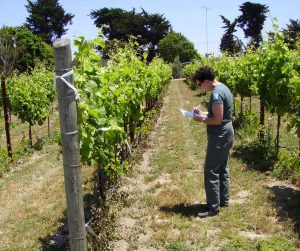
A successful entrepreneur and pioneer in biopesticides, Pam Marrone is the co-founder and executive chair of the Invasive Species Corp. and Invasive Species Foundation. A thought leader with deep experience in the ag biologicals industry, she successfully brought multiple science-based products to market and scaled two agbio companies from founding to a consistent high growth revenue stage.
Marrone also mentors entrepreneurs and promotes education on ag biologicals through speaking and writing.
In 2010, she won an IPM Innovator award from the California Department of Pesticide Regulation (DPR) and recently served on DPR’s committee on Sustainable Pest Management, creating a new roadmap and recommendations. She also serves on the board of the Foundation for Food and Agriculture Research.
In 2019, BioAg World honored her with a Lifetime Achievement Award for Contribution in Biopesticides.

What are biopesticides?
They’re naturally occurring microorganisms like bacteria and fungi and some extracts of plants and other natural materials that are nontoxic to humans and the environment.
And how do you find them?
Microorganisms live everywhere, outdoors in the soil, on flowers, on your body, on your feet, and so you literally can find them anywhere. Companies looking for and developing new drugs look to the rainforest, and for areas of high biodiversity to find new drugs. It’s the same with things that kill pests.
So you look for areas where there’s a little battle going on between the different microbes, and the ones that win out tend to be the ones that probably have pesticidal properties. A dry creek bed, where it’s wet part of the year and dry part of the year, so the microbe has to be pretty tough to survive the different conditions.
How did you get started in this field?
I was actually hired to start up a new program at Monsanto in the 1980s, looking for nonchemical ways to control pests.
I was given pretty much free rein, and I set up a national products screening program, like we’re doing now at Pro Farm Group (the new company name, after the sale to Bioceres Crop Solutions), just screening microbes looking for ways to control pests. And that was great fun.
We screened over 100,000 microorganisms, looking to control pests, plant pathogens and weeds. And Monsanto decided they were going into genetic engineering of crops, and so that’s what they wanted me to switch to, and I really preferred screening the microbes. I fell in love with that.
Then I got a call from a Danish company, Novo Nordisk. They were looking for someone to start up a new company, looking for testing microbes against pests. And I said, ‘Wow, that’s exactly what I want to do,’ so I left Monsanto and started up Entotech here in Davis, [Calif.]
And then they sold us to a large competitor in 1995. And that’s when I started AgraQuest, which I left in 2006, and then started up Marrone Bio Innovations in 2006.
Where did you find the organisms in these products?
We found the Bacillus in Stargus® in a rice field in northern California. Grandevo®, which we licensed from USDA-ARS, was found under a hemlock tree in Maryland, and we discovered Venerate® from a Buddhist Temple garden in Japan.
Are growers using these products and find them effective?
Yes they are, and our products have grown quite rapidly. But it is important to know how best to use them as they are not curative synthetic chemicals and need to be applied before the buildup of the pest or pathogen.
Are there alternatives to glyphosate yet?
Not yet on the bioherbicide side. The products for organic growers are typically burndown and need to be reapplied, like those from capric and caprylic acids by Certis and Westbridge.
What are the next problems you’re hoping to solve to help growers?
I was working on three products for weed control while leading Marrone Bio. Bioceres has indicated it wants to complete their development.
In the new company that I recently co-founded, Invasive Species Corporation, we are setting up a bioherbicide screening platform. There are very few bioherbicides out there because chemical herbicides are so inexpensive. It is just very technically challenging to find a bioherbicide that will compete. But those types of grand challenges are what I like to tackle, and I am convinced with the new scientific tools we have today our team can quickly find some effective and cost-effective bioherbicides.







